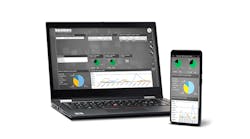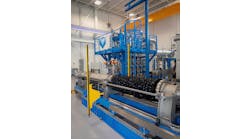Today, with the loss of skills to retirements and downsizing in process plants, many of these instrument shops are gone or diminished, and so users tend to ship their instruments off to calibration services. A quick Internet search turns up about 900 calibration and repair services and 500 calibration services, with more opening every day.
To help users track instruments and detemine when calibration is needed, many suppliers offer useful programs. And, not only are many of these tools available online for free, but also many instruments have online diagnostics functions that can notify users when calibration is needed.
So where are we going? What’s the future for calibration? Many industry observers predict that there will be less need to calibrate in the future because field devices are being improved all the time to be more reliable and more stable. Users will find that their instruments are generally “in spec” during periodic calibrations, and so they’ll extend the intervals between calibrations. They add that users eventually will develop so much confidence in the integrity of their instrumentation that periodic calibrations will be discontinued. Instead, they’ll rely on predictive maintenance based on diagnostics generated by the devices.
Other calibration experts say calibration will continue to be vital in commissioning new plants and in periodic maintenance of existing plants. However, calibration practices will shift from preventive maintenance to predictive maintenance, which requires high accuracy standards and sophisticated data management systems. They also anticipate a change from bench calibrations in the instrument shop to in-situ calibrations. This trend will drive increased accuracy requirements for field calibration tools and increased portability requirements for precision calibration tools.
However, the question remains—who is going to perform these field calibrations? With many experienced instrument techs at or approaching retirement age, many younger techs with less real-world experience will be maintaining increasingly complex and sophisticated systems. This likely will force system builders and calibration vendors to design greater levels of intelligence into process control systems and maintenance tools.
Also, there’s expected to be a reduction in the number of pure instrument technicians and a shift towards combined electrician/instrument techs. This can be seen in the number of traditional electrical training programs now expanding their curricula to include process system maintenance.
Diagnostic tools also will undergo fundamental changes. Some observers see increasing use of HART, fieldbus, industrial Ethernet and wireless, all of which will be incorporated into future test equipment and calibration tools. They also see an increasing need for intrinsically safe test equipment. Already, many installations are mandating this limited-energy test gear throughout the plant, not merely in those units presenting a flammability or explosion hazard.
So maybe the future holds somewhat of a return to the old days, when plants maintained their own instruments. Smarter instruments, better calibration tools, highly trained technicians, and lots of hardware and software support from the vendors will help.




